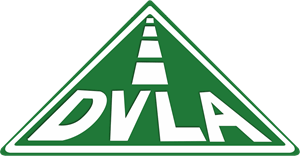Check Car Category
Sometimes, cars get badly damaged in accidents. When the cost to fix a car is more than what it’s worth, insurance companies will mark it as a write-off. This means it’s not worth repairing. To make things clear, they put these cars into different categories based on how bad the damage is.
If you’re buying a used car, one of the first questions you should ask is: what category is my car? Before purchasing a used vehicle, it’s essential to perform car category checks and review the car's history to ensure you know exactly what you’re getting. Cars can be labelled as Category A, B, S, or N. These labels show how serious the damage was—from small fixes to damage so bad the car can’t be fixed at all. Knowing this allows you to better understand the car's history and avoid surprises later. Car category checks give consumers peace of mind by disclosing any severe faults upfront.
Checking a car's category might help you determine its condition and cost. Reviewing a car's history is also a key part of the process. If you want to know how to find out your car’s category, this page will show you exactly how.
How To Check If A Car Has A Category Online?
When you want to see if a car has been listed as a write-off, you may believe that free car check websites might help. Unfortunately, these free tools often do not display category car check details. They can provide some basic information but not the complete picture of write-offs or catastrophic damage.
Paid Car Check Tools:
The best way to get detailed info is to use paid car check tools. These services gather data from insurance companies and other sources to show if a car has been given a category like Cat A, B, S, or N. It’s simple — just enter the car’s registration number, pay a small fee, and you’ll get a full report. These reports provide details on salvage records and other important aspects of the car's past, helping you make an informed decision. This is the most reliable way to check vehicle category before buying.
Online Car Marketplaces:
Some trusted car marketplaces show write-off categories right on their listings. You can see if a car is Category S or N, for example. Some sites even let you filter your search by category, which is great if you’re looking for a fixer-upper or just want to avoid damaged cars.
Asking the Seller About the Car’s Category:
If you don’t want to pay for a full report, you can ask the seller if the car has any category history. It’s a good step—if the seller is honest. Still, buying privately always carries some risk. If you can, get an independent check.
Knowing how to check a vehicle’s category helps you avoid surprises. With the right tools and questions, you’ll save money, time, and stress.
Different Car Insurance Write-Off Categories
What Does a Category A Write-Off Mean?
A Category A write-off means the car is damaged beyond repair—so badly that it can never be safely driven again. Think fires, crushed frames, or total wrecks. Not even the parts can be reused. The whole car must be scrapped.
Why so strict? It’s about keeping dangerous vehicles off the road. If your car is Category A, it’s the end of the road for it—for everyone’s safety.
What Does a Category B Write-Off Mean?
A Category B write-off means the car’s too damaged to ever drive again—but unlike Category A, some parts can still be reused. It’s not roadworthy, but it’s not a total loss for the scrapyard.
Think of it like this: the shell is done, but the heart still has value. Even though the car itself can’t be made roadworthy again, parts like the engine, wheels, or interior pieces might still be in good shape. These are considered salvageable parts, which can be removed and reused, while the body shell must be destroyed.
The rest of the car, which can’t be used, is taken apart and destroyed safely. This way, useful parts get a second life, and unsafe cars don’t return to the roads.
What Is a Category S Car, and What Does It Involve?
A Category S car is one that has been badly damaged in its frame or body. This is known as an S write-off or cat s, meaning the car has sustained structural damage and is considered structurally damaged. This means important parts like the chassis might be bent or twisted, and the crumple zone may also be affected, making the car unsafe to drive until it’s fixed.
For example, if a car was in a serious accident and its structure was hurt, it might get this label. But the good news is that a Category S car can be repaired and made safe again. It just needs to be fixed by experts who know how to make sure everything is strong and safe. Category S cars must be professionally repaired to restore them to a roadworthy condition.
Before it can be driven on the road again, a registered engineer has to check the repairs and approve the car. Once that’s done, it can be re-registered and legally driven, which is required for use on UK roads. The Category S label replaced the old Category C to better explain this kind of repairable damage.
What Is a Category N Car and What Should You Know?
A Category N car is one that has no serious damage to its structure. Instead, the damage is usually cosmetic, like dents or scratches, or it might be problems with electronics—these are examples of non-structural damage. These issues can be tricky or expensive to fix, but they don’t affect the car’s frame or body strength.
For example, a Category N car might have a broken headlight, damaged paint, or faulty electronics, but the important parts, like the chassis and body, are still solid. Sometimes, safety parts like brakes or steering could be damaged, so it’s important to get the car checked before driving. Safety-related parts, such as steering components, should be carefully inspected.
In simple terms,
category n car meaning points to damage that doesn’t affect the strong parts of the car. These cars are easier and cheaper to repair compared to Category S vehicles because the structure is still strong. Category N used to be called Category D, but the name changed to better describe the kind of damage involved.
Is It Worth Buying A Car With A Category/write-off Status?
Buying a car with a write-off status can be tricky, so it’s important to be careful. If the car you’re interested in is marked as Category S or Category N, don’t rush your decision. These cars may have been damaged, but if they’ve been fixed by professionals, they can still be good to drive.
It’s a smart idea to get an expert to inspect the car before you buy, just to be sure everything is in good shape. Before purchasing, always conduct a thorough history check to review the vehicle history and write off history so you can make an informed decision.
On the other hand, if your check category car report shows the car is Category A or B, it’s best to walk away. These cars have too much damage and can’t be legally driven or insured. Buying one could cause big problems, so it’s safer to avoid them altogether.
How does the Car Category impact market Value?
The car value is directly affected by the category of car status—cars with a CAT A, CAT B, CAT S or CAT N designation are worth much less than an undamaged car of the same year as the category reflects the extent of damage or repairs. For example, a Category S vehicle—repaired after structural damage—might be worth 20% to 40% less than a similar undamaged car. So, if you’re buying or selling, expect a lower price tag.
How Does The Selling Process Differ For Category Cars?
If your car’s been written off, the rules change based on the category. For Category S or N, you must tell the buyer—it’s part of being upfront about the car’s past.
But for Category A or B, private sales aren’t allowed. These cars are too unsafe for the road. They’re sent to scrapyards or ATFs. With Category B, some parts might still be reused, but the car itself is done.
There are also car-buying services that will buy scrap vehicles if you want to get rid of one quickly. Some of these services can also cover outstanding finance on category cars, so you can settle any unpaid finance before selling.
Knowing these rules helps ensure the sale is fair and legal for everyone involved.
Which Car Category Can Be Legally Sold?
If you want to sell a written-off car, you need to know which categories are allowed on the market. Cars marked as Category S or Category N can be sold, but there’s a catch—you have to tell the buyer about the car’s history.
Even if the car has been repaired to look like new you must be honest about its write-off status. This helps the buyer make an informed decision and avoid any legal trouble down the line. Doing a quick car category check before selling is a smart way to confirm the status and be transparent.
Are Category Cars More Difficult to Sell?
Cars that have been in accidents and have a category like Category N can be harder to sell. Many buyers are unsure about these cars, which makes them less popular. Because of this their market value is lower than similar cars that have never been damaged.
But don’t worry—there are experts who buy damaged cars. They know the market and can offer a fair price without the hassle. So even if your car has a category status you still have options to sell it quickly and safely.
Can You Get Insurance for a Category N Car?
Cat N cars can be insured, but it might cost a little more. Some insurance companies think these cars are more dangerous because they have been in an accident in the past. Before covering the car, the insurance company will look at its category. That could mean that your payments go up, or the car might not be insured at all by some companies.
Checking the category of the car you want to buy helps you know what to expect. If you want to get the best deal on insurance, it's smart to look at more than one company. You can save money and avoid shocks if you know this ahead of time.
Can You Get a Warranty on a Category Vehicle?
Cars with a write-off status—A, B, S, or N—don’t come with a warranty. Once marked as salvage, any manufacturer coverage is gone. That means repairs and maintenance are all on you.
Key Considerations Before Buying a Categorised Used Car
Before buying a used car with a category label, dig into its past. Check the service record, number of previous owners, and whether it’s been in any accidents or has any outstanding finances.
Use free MOT and valuation tools to spot safety issues and see what the car is really worth. The more you know, the better your decision.





